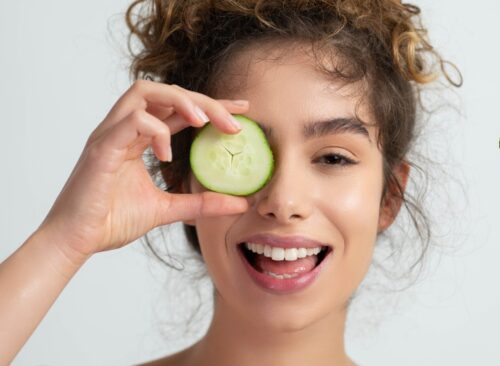
We all know the eyes are windows to the soul. But did you know eye problems can also be the first sign of health problems? Our eyes are a useful check for some health conditions. Here’s a rundown.
Diabetes
How it can show in the eyes
Blurred vision, poor night vision
Diabetic retinopathy is when tiny blood vessels in the retina at the back of the eye leak blood and other fluids, causing problems with vision. If not treated, it can progress and cause blindness. At least a third of people with diabetes have retinopathy.
Treatment
If detected early, retinopathy can be treated and vision loss can be slowed or stopped. Sometimes laser surgery is used.
Prevention
It’s important for people with diabetes to have good control of their blood glucose. Keeping blood pressure and cholesterol under control will help, as it does with other aspects of diabetes, so a healthy diet is key. Getting regular diabetes eye checks (even when vision is normal) is important too, as retinopathy can be present even without symptoms.
High cholesterol
How it can show in the eyes
A grey or white ring around the cornea, the clear surface on the front of the eye
This condition is called arcus senilis and it shows as a grey-white line of fat deposits around the outer part of the cornea. Sometimes the deposits make a complete ring. Arcus senilis is a common age-related condition in older people and, for them, it’s not a sign of anything dangerous.
However, if you’re under 40, it could be a sign of dangerously high cholesterol, which is a symptom of familial hyperlipidaemia, an inherited genetic condition causing high cholesterol and high triglycerides. You may also see fatty deposits on the eyelids, known as xanthelasmas.
Treatment
If you have this symptom and you’re under 40, it’s important to get a blood test to check your cholesterol levels. For people with familial hyperlipidaemia, the usual advice about diet for lowering cholesterol doesn’t always have an effect, so cholesterol-lowering medication is usually prescribed.
Prevention
It’s possible diet changes may help keep familial hyperlipidaemia under control. That means keeping saturated fat intake low and eating a healthy, plant-based diet including lots of vegetables and healthy fats from fish, nuts and seeds.
Liver disease
How it can show in the eyes
Yellow whites of the eyes
The white portion of the eye is known as the sclera. Healthy eye tissue should be white. Yellowing of the eyes is known as jaundice and can be a sign of serious liver disease.
Jaundice is a sign of high levels of bilirubin, which the liver makes when it’s inflamed or damaged. Yellow eyes could be an indication of alcoholism, cancer or infection, and are a common sign of cirrhosis. They can also indicate non-alcoholic fatty liver disease or hepatitis B or C. Yellow eyes can also be a symptom of conditions of the gallbladder or pancreas.
Along with yellow eyes, you may also have other issues, such as dark urine and itchy skin.
Treatment
If you have this symptom, it’s important to get checked out. Your GP will want to check your liver function and treatment will depend on the results of those tests.
Stroke
How it can show in the eyes
Temporary loss of vision, double vision
A sudden, temporary loss of vision, like a curtain being pulled over one eye, may sometimes be due to a transient ischaemic attack (TIA), a brief loss of oxygen to one particular part of the brain.
Other visual symptoms of TIAs include loss of part of the vision in both eyes or double vision. TIAs are also known as mini-strokes and can be life-threatening.
What to do
If you have these vision symptoms, especially along with other symptoms, such as weakness, numbness or tingling sensation on one side of your face or body, difficulty speaking clearly or dizziness and loss of balance, you should seek immediate urgent medical attention.
Prevention
We can lower our risk of stroke by keeping blood pressure under control, losing weight if we’re overweight, exercising regularly and stopping smoking. Again, a healthy diet is key.
Vitamin A deficiency
How it can show in the eyes
Night blindness
A lack of vitamin A can cause problems with being able to see in low light or at night. This is known as nyctalopia or night blindness.
Night blindness can also be caused by other eye conditions, such as nearsightedness or cataracts.
Treatment
If the night blindness is related to vitamin A deficiency, supplements would be prescribed. For other causes, the underlying issue would be treated.
Prevention
We have access to plenty of vitamin A in our food. Liver is high in vitamin A and you can also load up on colourful vegetables and fruit such as pumpkin, carrot, mango and sweet potato.
Other diseases with links to the eyes
Many conditions can have secondary symptoms relating to the eyes. These include:
- Arthritis
which can cause a range of eye problems including cataracts and glaucoma - Multiple sclerosis
Vision problems can be one of the first signs of relapsing MS - HIV/AIDS
People with HIV/AIDS can experience a range of eye problems.
Eye-friendly foods
Colourful vegetables are full of antioxidants such as vitamins C and A. Be good to your eyes with bright green, orange and yellow vegetables and fruits, such as spinach, silver beet, broccoli, carrots, pumpkin, capsicum, sweetcorn, kiwifruit, mango and melon.
Omega-3 fats found in oily fish and in walnuts and linseeds are important for eye health, especially as we age.
Dark green leafy vegetables are full of lutein and zeaxanthin, which are important for eye heath. Go for spinach, kale, silver beet, Brussels sprouts and broccoli.
Foods high in zinc may be beneficial for our eyes. Nuts, legumes and oysters contain good levels of zinc.
Iridology — can the iris really show our health?
Iridology is an alternative health practice, in which a practitioner looks at the iris of the eye todiagnose health conditions. Iridologists use eye ‘maps’, in which parts of the iris correspond to parts of the body.
Iridology has been looked at in a number of studies to determine its value as a diagnostic tool. The evidence to date shows it’s probably pseudoscience and no more effective than random chance at diagnosing health problems.
Did you know?
An eye examination can reveal other hidden health conditions, including cancer. When an optician looks inside our eyes, it’s possible to see melanoma, which can occur in different parts of the eye. Metastatic cancer – cancer from other parts of the body that has spread – can sometimes show in the eyes first.
Article sources and references
- American Academy of Opthalmology. 2012. Four fantastic foods to keep your eyes healthy, aao.org Accessed August 2018https://www.aao.org/eye-health/news/four-fantastic-foods
- American Academy of Opthalmology. Corneal arcus, aao. org Accessed August 2018https://www.aao.org/bcscsnippetdetail.aspx?id=75f705e5-3ebe-4593-837d-5ae7bc3d44f3
- Cancer Society NZ. 2013.Ocular melanoma, cancernz.org.nz Accessed August 2018https://auckland-northland.cancernz.org.nz/cancer-information/cancer-types/ocular-melanoma/?divisionId=17¢reId=1
- Eckardt AM et al. 2011. Orbital metastases as first sign of metastatic spread in breast cancer: Case report and review of the literature. Head & Neck Oncology 3:37https://www.ncbi.nlm.nih.gov/pubmed/21859452
- Ernst E 1999. Iridology: A systematic review. Complementary Medicine Research 6:7-9https://www.ncbi.nlm.nih.gov/pubmed/10213874
- Ernst E 2000. Iridology: Not useful and potentially harmful. Archives of Ophthalmology 118:120-1https://jamanetwork.com/journals/jamaophthalmology/fullarticle/412789
- Harvard Health Publishing. 2018. 7 things you can do to prevent a stroke, health.harvard.edu Accessed August 2018https://www.health.harvard.edu/womens-health/8-things-you-can-do-to-prevent-a-stroke
- Health Navigator. Diabetic Retinopathy, healthnavigator.org. nz Accessed August 2018https://www.healthnavigator.org.nz/health-a-z/d/diabetic-retinopathy/
- Lopes-Jimenez F. 2016. Arcus senilis: A sign of high cholesterol? Mayo Clinic mayoclinic.org Accessed August 2018https://www.mayoclinic.org/diseases-conditions/high-blood-cholesterol/expert-answers/arcus-senilis/faq-20058306
- Macular Degeneration New Zealand. 2013. Nutrition and supplements, mdnz.org.nz Accessed August 2018http://mdnz.org.nz/assets/Files/MDNZ-Nutrition-and-supplements-Brochure-Update-4PP.pdf
- Medline Plus. 2016. Familial hypercholesterolaemia, medlineplus.gov Accessed August 2018https://medlineplus.gov/ency/article/000392.htm
- MS Lifelines. Ten symptoms of MS to keep track of: Vision problems, mslifelines.com Accessed August 2018https://www.mslifelines.com/understanding-ms/signs-and-symptoms-of-ms/ms-eye-symptoms
- Nall R. 2016. What causes yellow eyes? Healthline.com Accessed August 2018https://www.healthline.com/symptom/yellow-eyes
- Novella S. 2011. Iridology, sciencebasedmedicine.org Accessed August 2018https://sciencebasedmedicine.org/iridology/
- Royal Australian and New Zealand College of Opthalmologists. 2012. Diabetic Retinopathy Online Patient Advisory, ranzco.edu Accessed August 2018https://ranzco.edu/ophthalmology-and-eye-health/collaborative-care/referral-pathway-for-diabetic-retinopathy
- Seymour T. 2017. How does arthritis affect the eyes? medicalnewstoday.com Accessed August 2018https://www.medicalnewstoday.com/articles/319787.php
www.healthyfood.com










